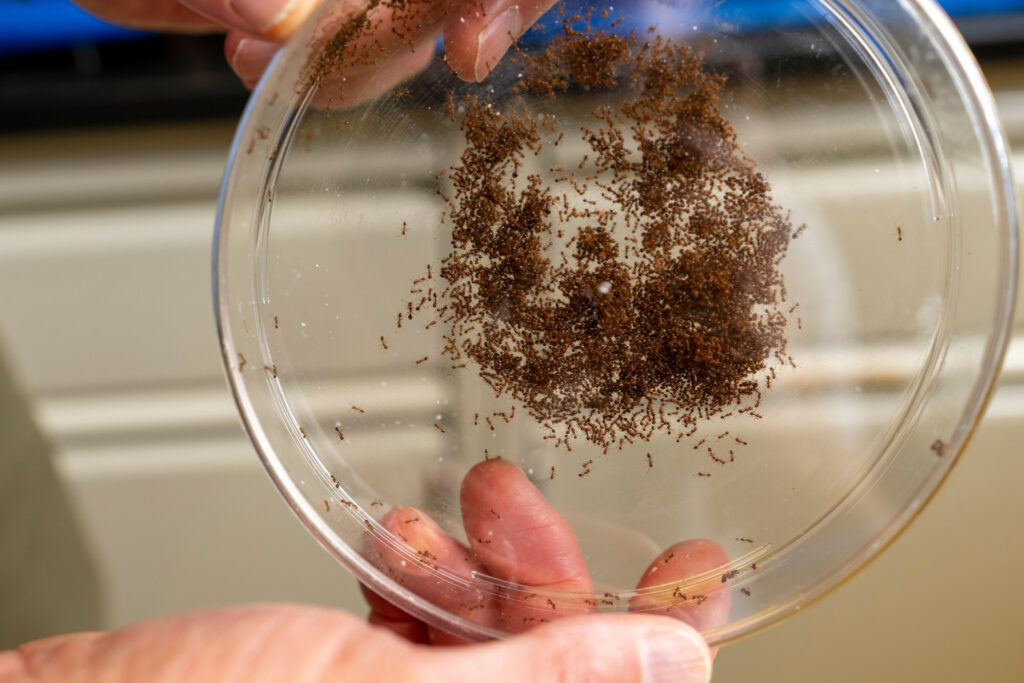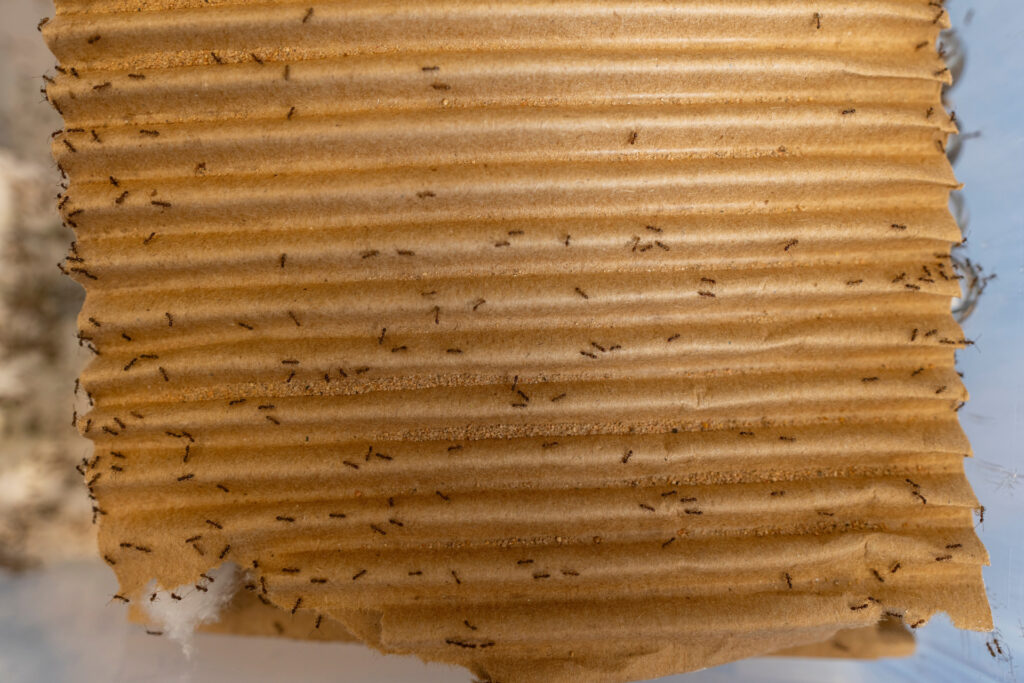Newswise — Edward Vargo, Ph.D., professor and endowed chair of urban entomology in the Texas A&M College of Agriculture and Life Sciences Department of Entomology, was elected as an Entomological Society of America Fellow.
Vargo is internationally recognized for research in the reproductive biology and molecular ecology of social insects and urban insect pests. He received his award at the society’s recent annual meeting in National Harbor, Maryland.
“Fellow is the society’s premiere award, and when I look at the people who have been named fellows, it’s a pretty distinguished group,” Vargo said. “I think the award recognizes what an entomologist has accomplished throughout their career and their impact on the field. So, it’s a real honor to be considered among that group.”
Scientific curiosity leads to entomology
Vargo’s interest in entomology didn’t begin with a fascination for insects.
Lewis Thomas’ book, “The Lives of a Cell,” first captured his imagination. He was intrigued by behavioral and biological concepts surrounding Thomas’ explanation of how cells work together for the benefit of the organism. He then discovered ants and termites, bees and wasps could be considered “superorganisms” because, much like cells for the organism, they coordinate individual activity and work together to benefit the colony.
His doctoral research focused on the social regulation of reproduction and development in fire ant colonies.
“In grad school, we were working on this very big pest species, but I was in a lab doing very basic research, so we weren’t looking at how fire ants impact people and ways to control them,” he said.
In 1987, Vargo was awarded a National Science Foundation postdoctoral fellowship to work with Luc Passera, Ph.D., at the Université Paul Sabatier in Toulouse, France, on the regulation of reproduction and caste development in Argentine ants.
By the late 1980s, fire ants had spread to Austin and were becoming a pest in agriculture and urban areas around major swaths of the state. Vargo returned to the University of Texas to study the reproductive biology of fire ants as a research scientist from 1989 to 1998.
“Fire ants started like many invasive species,” he said. “They hang out for a while, and then something happens, and it just explodes. I began to work with the Texas Department of Agriculture on issues that fire ants presented, and I realized this is important.”
Scientific opportunities with social pests
Vargo began studying a pest he had no experience with, termites, when he joined the Department of Entomology at North Carolina State University as an assistant professor in 1998.
“There was a lot we didn’t know, and so we were discovering basic biology and foraging behavior because termites have a very cryptic lifestyle living and foraging underground,” he said.
New genetic and molecular methods presented opportunities for Vargo and others to understand termites’ social organization, foraging dynamics and other behaviors. Vargo said the approach has helped him and other scientists understand invasive pest species and retrace their introduction history.
“I saw the opportunity to get some basic biological information and also do things that were of interest to the pest management industry in terms of controlling them,” he said. “It was the integration of molecular ecology with urban entomology, using molecular genetic methods to understand colonies and populations.”


Understanding urban pests
Vargo assumed his current position in 2014. His interdisciplinary research in urban entomology utilizes genetics, behavior and physiology to study the reproductive biology, population genetics and management of urban insect pests ranging from fire ants to termites, cockroaches and bed bugs.
Next-generation genomic sequencing has provided much more power to identify genetic differences between species and how individuals are related from one population to the next, he said.
Vargo’s genetic studies investigate the breeding structure of termite and ant colonies, the dispersal and population biology of bed bugs and cockroaches, the invasion biology of urban pests, and management approaches aimed at eliminating colonies of termites and ants.
He has provided insight into how environmental changes influence the population dynamics of the No. 1 ant pest in the nation – the odorous ant. This species is native to the U.S., and its single-queen colonies are very small in forests and rural environments. But their social behavior changes dramatically in urban and suburban environments, and colonies can include thousands of queens.
“More people have problems with it than any other ant species,” he said. “And so, we are trying to better understand this big change in social organization when they move from natural to urban environments.”
His research also explores a growing concern, insect pest resistance to insecticides and how to reduce or prevent the spread of resistant genes in pest populations.
His research on chemical communication in social insects focuses on the role of queen pheromones in caste determination, king and queen recognition by workers, and regulation of reproduction in colonies of ants and termites.
Vargo’s group has published more than 180 scientific papers and book chapters. He has given or co-authored more than 300 presentations at regional, national and international meetings. He has mentored 10 doctoral students, nine master’s students, 11 postdoctoral researchers and six visiting scientists.
He has held leadership positions in professional societies, including president of the Entomological Society of America’s Medical, Urban and Veterinary Entomology Section; president of the North Carolina Entomological Society; and president and secretary-treasurer of the North American Section of the International Union for the Study of Social Insects. He has served as associate editor for Environmental Entomology, and he has advised the Korean and Australian governments on the interception and remediation of introduced fire ants.
“It’s really an honor to be recognized and to feel like your peers value your work,” he said.
